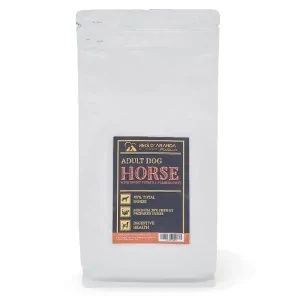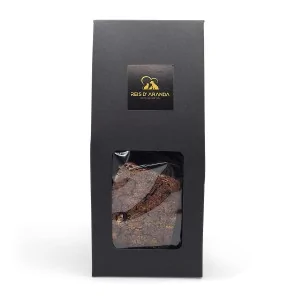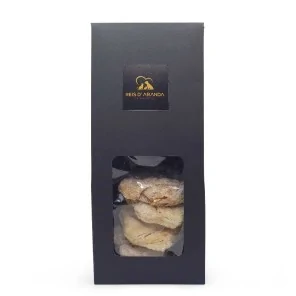Its name says it all: the Vienna blue rabbit comes from Austria. Not only is it beautiful with its shiny blue-grey...
THE MINIATURE PINSCHER
INTRODUCTION
The Miniature Pinscher is a breed of dog belonging to the Pinscher family originating in Germany, where they are called Zwergpinscher. It is a miniaturisation of the German Pinscher which was originally used for hunting birds, especially wild birds.
THE ORIGIN OF THE MINIATURE PINSCHER
In the early 20th century the Miniature Pinscher was quite common in its country of origin, being first exported to the United States in 1919, where it was the first breed to be registered by the American Kennel Club in 1925.
Smooth-haired and rough-haired Pinschers, now known as Schnauzers, belonged, at that time, to the same type of dog breed, according to the Pinscher-Schnauzer Club, founded in 1895 and still present today. At the beginning of the 20th century, the founder of the club, Josef Berta, began to consider them as two different breeds. The breeding of purebred Miniature Pinschers began very early and the dog quickly distanced itself from its larger relatives. Unlike the German Pinscher, the Miniature Pinscher was soon appreciated as a domestic dog. Between the 19th and 20th centuries, it was already part of many households. In the Pinscher-Schnauzer Club's pedigree register of 1925, 1,300 entries were already recorded. The ladies of high society liked to adorn themselves with this small, elegant animal. As early as 1937, Felix Ebner described the dog of the day as follows: ‘He requires little space and little care, he can be very polite and correct; even in his small disobediences, he is funny and charming. With his clean paws and his short, smooth coat, he can stand fearlessly on the most elegant upholstery’.
As one of the breed's first breeders, Josef Berta realised that the image of the simple lap dog did not fit the Miniature Pinscher at all. In fact, he was so pleased with his own miniature pinscher Max v. Klein-Paris that he wrote: ‘I have had some tame dogs; others who have left an indelible memory in my home. Max surpassed them all; the best, most intelligent, most agreeable and most efficient companion I have ever had’. With his praise, Josef Berta encouraged other breeders to take an interest in this special breed. It was he and his companions who made the Miniature Pinscher the dog it is today: an unmistakable, courageous companion with a good character, strong health and great beauty.
THE STANDARD OF THE MINIATURE PINSCHER
GENERAL APPEARANCE: The Miniature Pinscher is the shrunken image of the German Pinscher, without the defects of dwarfism. His elegant square build is clearly visible through his short, smooth, tight coat.
IMPORTANT PROPORTIONS
- The build should appear as square as possible in relation to the length of the body and the height at the withers.
- The total length of the head (from the tip of the nose to the occipital protuberance) should be in a ratio of 1:2 to the length of the body (from the withers to the set on of the tail).
BEHAVIOUR / TEMPERAMENT : Very good temperament, full of life, self-confident, balanced. All this makes him an excellent family and companion dog.
HEAD :
CRANIAL REGION
- SKULL : Strong and elongated, with the occiput not very marked. The forehead is flat and parallel with the bridge of the nose.
- NASO-FRONTAL DEPRESSION (STOP) : Mild, but clearly defined.
FACIAL REGION
- TRUFFLE: Well developed and black.
- HOCIO: Ending in a truncated wedge. The nasal bridge is straight.
- BELLIES: Black, resting firm and flat on the jaws; the corners of the mouth are closed.
- JAWS / TEETH: Upper and lower jaw powerful. The bite is scissor bite, strong and complete (42 clean, white teeth in accordance with the dog's dental formula). Should close well. The masticatory musculature is strongly developed without forming disturbing cheeks.
- EYES: Dark, oval, rims of eyelids close fitting and pigmented black.
- EARS: Erect; folded, set on high, V-shaped; the inner edges of the ears rest on the cheeks. The ears are turned forward towards the temples. The parallel fold must not extend beyond the upper line of the skull.
- NECK: Aristocratic in carriage, not too short, unbroken, flowing harmoniously at withers, dry, without dewlap or loose throat skin. The skin of the throat is firm, without wrinkles.
BODY
- TOPLINE : Sloping slightly from the withers towards the rear.
- CROSS : The highest point of the topline.
- BACK: Strong, short, firm.
- LOIN : Strong. The distance from the last rib to the hip is short so that the dog appears compact.
- Croup : Slightly rounded and passing imperceptibly over the set on of the tail.
- CHEST : Moderately broad, oval in shape, deep to the elbows. The forechest is especially marked by the point of the sternum.
- BOTTOM LINE : Flanks not excessively tucked up so as to give a nice wavy line to the underside of the chest.
- TAIL: Natural, the aim being to achieve a sabre or sickle shape.
LIMBS :
FOREQUARTERS : Seen from the front, the forelegs are strong, straight and not too close together. The forearms seen from the side are straight.
- Shoulders: The shoulder blade rests firmly on the ribcage. Well muscled on both sides of the spine of the bone, protruding over the vertebrae of the spine in the thoracic region. As sloping and well laid back as possible, forming an angle of 50° to the horizontal.
- ARM: Close to the body, strong and muscular, forming an angle of approximately 95° to 105° to the shoulder blade.
- ELBOW: Close fitting, turning neither in nor out.
- FOREARM: Straight seen from the front and in profile, strongly developed and muscular.
- BODY: Strong and stable.
- Pastern: Strong and springy, seen from the front straight, slightly oblique in profile in relation to the ground.
- HANDS / FEET FOREQUARTERS : Short and round; toes close together and arched (cat feet); strong pads; nails short, black and strong.
HINDQUARTERS : Seen obliquely in profile, from behind, parallel and not too close together.
- Upper thighs: Moderately long, broad and strongly muscled.
- KNEE: Should be turned neither in nor out.
- LEG: Long and strong, sinewy, continuing into a powerful tarsus.
- HIP: Well angulated, strong, firm, turning neither in nor out.
- METATARSE: Perpendicular to the ground.
- FEET: Slightly longer than the forefeet. Toes close together and arched; nails short and black.
GAIT / MOVEMENT : The Miniature Pinscher is a trotter. During movement the back remains firm and relatively still. The onset of movement is harmonious, sure-footed, powerful, free and with good reach. In trotters it is typical to have great ground coverage with a clean, flowing movement, with a powerful drive and a wide front extension.
SKIN : Firm all over.
COAT: Short, dense coat, glossy and close fitting to the body, without bald patches.
COLOUR :
SINGLE COLOUR: Deer red, red-brown to dark red-brown.
BLACK AND FIRE: Coat black lacquer with red to brown tan markings. It is desirable that the markings are as dark as possible, saturated and well defined. The tan markings are located : on the eyes, on the underside of the neck, on the pasterns, on the feet, on the inner sides of the hind legs and on the perineum. On the forechest, two triangles of equal size clearly separated from each other.
SIZE AND WEIGHT
HEIGHT AT WITHERS
- MALES AND FEMALES: 25 to 30 cm.
WEIGHT
- MALES AND FEMALES: 4 to 6 kg.
FAULTS: Any departure from the foregoing points should be considered a fault and the seriousness with which the fault should be regarded should be in exact proportion to its degree and its effect upon the health and welfare of the dog. In particular:
- Appearance heavy or light, short or patilargo.
- Heavy or round skull.
- Wrinkles on the forehead.
- Short, pointed or narrow muzzle.
- Pincer bite.
- Eyes light, too large or too small.
- Ears set too low or too long, ears carried differently from each other.
- Loose throat skin.
- Back too long, tucked up or soft.
- Carried too long, tucked up or too soft.
- Drooping croup.
- Long feet.
- Ambling gait.
- High gait.
- Fine coat.
- Eel line, dark saddle, light coat, mottled coat.
- 1 cm above the upper height limit or 1 cm below the lower height limit.
SERIOUS FAULTS
- Lack of typicality of sex expression (e.g. male bitch).
- Light in appearance.
- Lack of skull/muzzle parallelism.
- A broadened skull.
- Elbows turned outwards.
- Hocks turned inwards.
- Hind pasterns not sufficiently angulated or barrel shaped.
- Deviations of more than 1 cm and less than 2 cm in the maximum and minimum heights respectively.
ELIMINATING FAULTS
- Shyness, aggressiveness, viciousness, exaggerated suspicion, nervous behaviour.
- Deformity of any kind.
- Lack of type.
- Faulty bite, overshot or undershot bite, incisor arches deviated.
- Gross faults in every region such as faults of construction, hair and colour.
- Deviations of more than 2 cm from the upper and lower height limits.
Any dog showing clear signs of physical or behavioural abnormalities should be disqualified.
NB : Male dogs should have two apparently normal appearing testicles fully descended into the scrotum.
THE VERSATILITY OF THE MINIATURE PINSCHER
The Miniature Pinscher is a dog of great versatility, not only a good pet for sporting families, but also an excellent hunter of mice (the function for which it was created and selected) and as a warning dog with very fine hearing which alerts to the slightest intruder. Although it is not an attack and defence dog, it can be trained for this function, although its small size does not give it great strength or endurance like its larger cousins (such as the pinscher and the dobermann).
Because they are active dogs, their diet is important and we must offer them quality proteins low in fat to avoid obesity or overweight, such as the Reis d'Aranda Angus beef feed or the Reis d'Aranda horse meat feed.
THE HEALTH OF THE MINIATURE PINSCHER
The Miniature Pinscher is a breed that, like any other dog breed, if well selected is very healthy and lives an average of 15 years. Otherwise, if their bloodline is not cared for and they are not given the appropriate health tests before breeding they can be prone to various diseases:
- HIP DYSPLASIA: Hip dysplasia is a multigenic and osteoarticular disease that can be hereditary and degenerative. Therefore, there may be different factors with which to try to predict whether the disease can be developed or not. It is necessary to take into account that, although it may be a hereditary disease, it does not always have to develop as it is possible that the dog does not transmit it to its descendants (some causes are slippery floors and obesity or overweight during growth).
- Patellar luxation: Patellar luxation is one of the most common orthopaedic conditions in dogs and is diagnosed in 7% of puppies. The disease mainly affects small dogs, especially breeds such as boston and yorkshire terriers, chihuahuas, pomeranians and miniature poodles. The incidence in larger breeds has been increasing over the last ten years and breeds such as Chinese shar pei, smooth retriever, akita and Pyrenean mountain dog are now considered to be predisposed to the disease. Patellar luxation affects both knees in half of the cases, potentially leading to discomfort and loss of function. Patellar dislocation is occasionally caused by traumatic injury to the knee, resulting in sudden, severe limb lameness.
- CATARACTS: Cataracts in dogs are a loss of transparency of the lens that helps them to see better, i.e. loss of the crystalline lens. Due to the breakage of the crystalline tissue, the eyes become cloudy and cause blurred vision. It is essential to treat them as soon as possible because the more time passes, the more dense they become and the more likely it is that the canines will have a total loss of vision without the ability to recover it. There are several causes of cataract disease in dogs. One of them may be by nature or by the dog's old age, as we have already mentioned above, due to the rupture of the crystalline lens. But there are also other causes of cataracts in dogs, such as trauma, injury, inflammation of the eye or diabetes. However, the most common cause or the one most commonly diagnosed is hereditary cataracts. Age is not a determining factor in this cause as they can appear when the animal is young.
- VON WILLEBRAND'S DISEASE: Von Willebrand's disease (VWD) is an inherited disease that affects the body's ability to produce the Von Willebrand's protein, which is necessary for proper blood clotting. Dogs with VWD can suffer from spontaneous or prolonged bleeding following injury or surgery, which can be life-threatening (very similar to haemophilia).
CONCLUSION
As we can see, the Miniature Pinscher is a great breed for those owners or families who like sport, nature walks or the world of training, as due to its versatility it is a dog that can perform a wide variety of activities.
Leave a comment
Log in to post comments
















